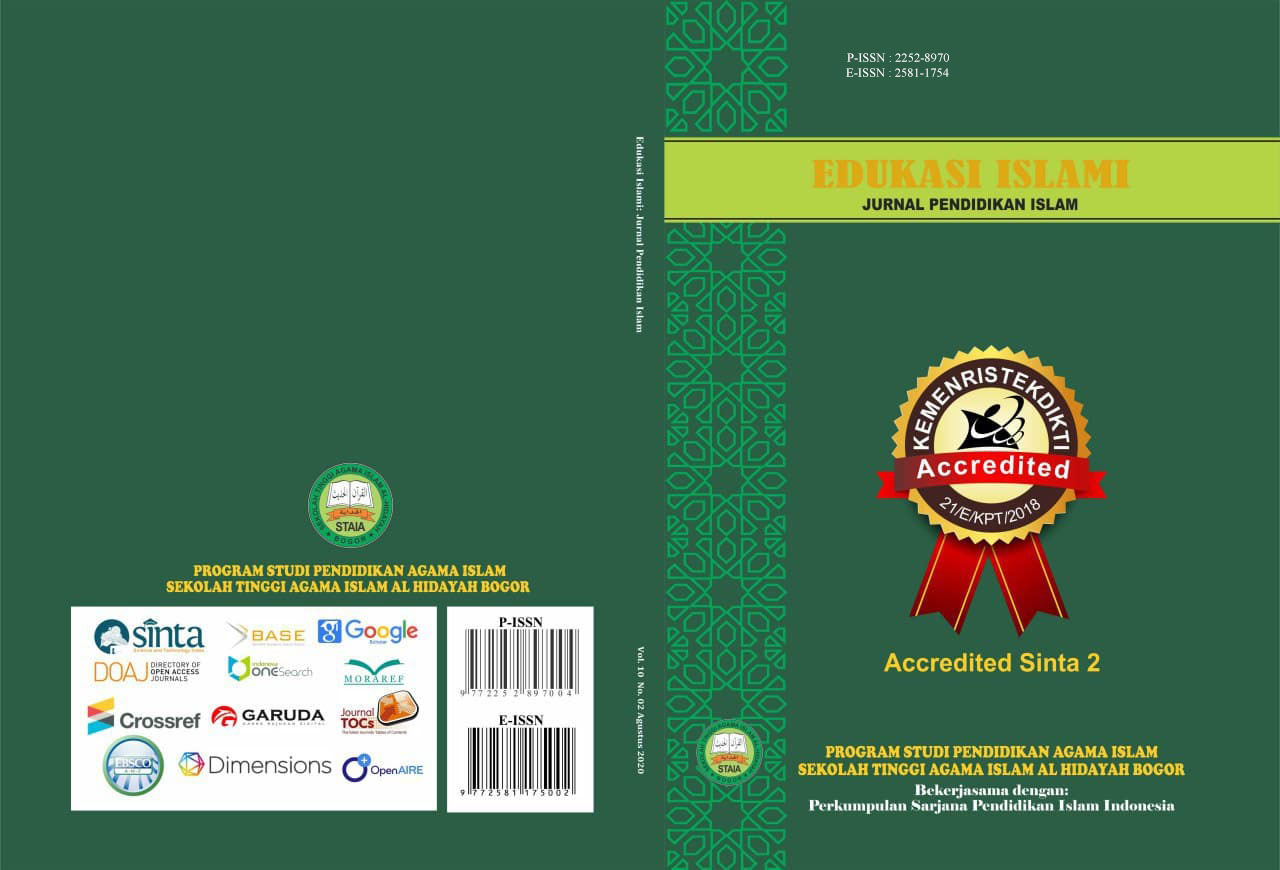Implementation And Implication Of The Arabic Curriculum at MAN 1 Metro Lampung
DOI:
https://doi.org/10.30868/ei.v12i001.5476Keywords:
Implementation, Implication, Curriculum, Arabic Language, Madrasah Aliyah NegeriAbstract
This study aims to elucidate the implementation and implications of the Arabic language curriculum for students at Madrasah Aliyah Negeri 1 in Metro Lampung City. The study examines the application of the curriculum and the outcomes it yields for students. The study utilized a descriptive qualitative approach for research and collected data through interviews and analyzing MAN 1 Arabic curriculum documents in Metro City. The implementation of the Arabic language curriculum during the reform era, from KBK and KTSP to the 2013 Curriculum, has affected students' Arabic language proficiency. The findings indicate that the Arabic language curriculum's execution aligns with academic conventions and supports student learning. The study reveals that the implementation of the Arabic language curriculum runs smoothly in Madrasah Aliyah Negeri 1 Metro City. The teacher regularly evaluates students through questions on the categorization of Arabic words - isim, fi'il, and letters- and their associated divisions and characteristics. As part of this process, students must memorize and comprehend 200-300 vocabularies and engage in spoken communication in Arabic. The teacher serves as a facilitator and guide to aid students in learning the language. The new curriculum's implications for teaching and learning activities are relevant, although objective evaluations are required. Students can learn independently and think critically, enhancing their linguistic abilities. The field provides substantial opportunities for students to broaden their knowledge and understanding of the Arabic language.
References
Alhamuddin, (2015) ‘Sejarah Kurikulum di Indonesia (Studi Analisis Kebijakan Pengembangan Kurikulum)’, Nur El-Islam, 2(1), 48 - 53.
Direktorat Jenderal Pendidikan Islam Kementerian Agama, (2006) Undang-Undang danPeraturan Pemerintah RI tentang Pendidikan, Jakarta: Depag.
Dokumen kurikulum bahasa Arab Madrasah Aliyah Negeri 1 Metro.
Erniawati (2020) Wawancara tanggal 25 Juli 2020
Hasyim, M. (2014) Pendekatan Andragogi dan Pedagogi dalam Pembelajaran Bahasa Arab,, Magelang: PKBM Ngudi Ilmu, 2014.
Hermawan, Acep. (2018) Metodologi Pembelajaran Bahasa Arab, Bandung: Remaja Rosdakarya, 2018.
Kasiman (2020) Wawancara tanggal, 25 Juli 2020.
Majma’ al-Lughah al-‘Arabiyah, (2004) al-Mu‘jam al-Wasîth, Kairo: Maktabah asy-Syuruq ad-Dauliyah.
Marlina Zahara, (2020) Wawancara tanggal 25 Juli 2020.
Moeliono, Anton et al (1990) Kamus Besar Bahasa Indonesia, Jakarta: Balai Pustaka.
Muttaqin, Zaenal, et al (2014), Buku Guru Bahasa Arab, Jakarta: Direktorat Pendidikan Madrasah Direktorat Jenderal Pendidikan Islam.
Peraturan Menteri Agama Republik Indonesia Nomor 000912 Tahun 2013 tentang Kurikulum Madrasah 2013 Mata Pelajaran Pendidikan Agama Islam dan Bahasa Arab.
Rokiban, (2021) Wawancara tanggal 27 September 2021
Steenbrink, Karel A. (1994) Pesantren Madrasah Sekolah, Pendidikan Islam dalam Kurun Moderen, Jakarta: LP3ES.
Wahab, Muhbib Adbul (2008) Epistemologi dan Metodologi Pembelajaran Bahasa Arab, Jakarta: Lembaga Penelitian UIN Syarif Hidayatullah.
Downloads
Published
Issue
Section
Citation Check
License
Authors who publish with this journal agree to the following terms:
- Authors retain copyright and grant the journal right of first publication with the work simultaneously licensed under a Creative Commons Attribution License that allows others to share the work with an acknowledgment of the work's authorship and initial publication in this journal.
- Authors are able to enter into separate, additional contractual arrangements for the non-exclusive distribution of the journal's published version of the work (e.g., post it to an institutional repository or publish it in a book), with an acknowledgment of its initial publication in this journal.
- Authors are permitted and encouraged to post their work online (e.g., in institutional repositories or on their website) prior to and during the submission process, as it can lead to productive exchanges, as well as earlier and greater citation of published work (See The Effect of Open Access).









